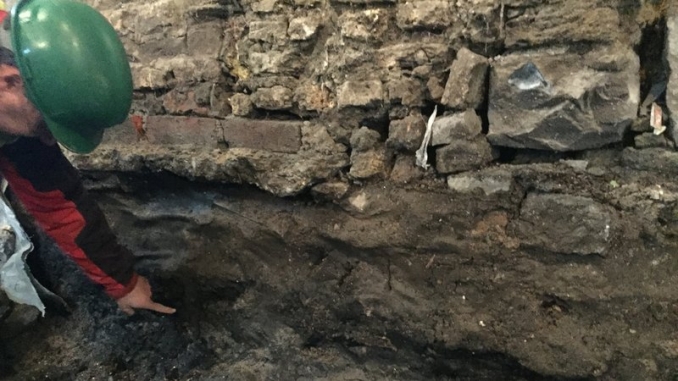Archaeologists discover 13th Century Irish castle walls in Galway
Construction work being undertaken in Quay Street, Galway (Irish: Gaillimh) in the West of Ireland has revealed the remains of a castle. Archaeologists believe it to be part of the oldest-known stone building in Galway city and that the two metre thick stone walls formed part of Dún na Gaillimhe, a castle built by the De Burgo family in 1232. The fortification was built along the then shoreline of the river Corrib. It was preceded by a wooden structure on the same site, which is mentioned in the annals of 1124. The last record of the castle was in 1280 and it is believed that it was demolished around that time, with the materials from the building used in the construction of the Hall of the Red Earl, a short distance away. The Hall had been the oldest discovered structure in the city until this new find.
The River Corrib (Irish: Abhainn na Gaillimhe) flows from Lough Corrib (Loch Coirib) through Galway to Galway Bay. Legend has it that the river was called after Gaillimh inion Breasail, the daughter of a Fir Bolg chieftain who drowned in the river. It is thought she was a tribal or local goddess of the river, much as other dieties are associated with other rivers in Ireland, such as Boann, the Irish goddess of the River Boyne (An Bhóinn or Abhainn na Bóinne) and Sionann who was the goddess of the River Shannon (Abha na Sionainne). Galway takes its name Gaillimh from the river.






